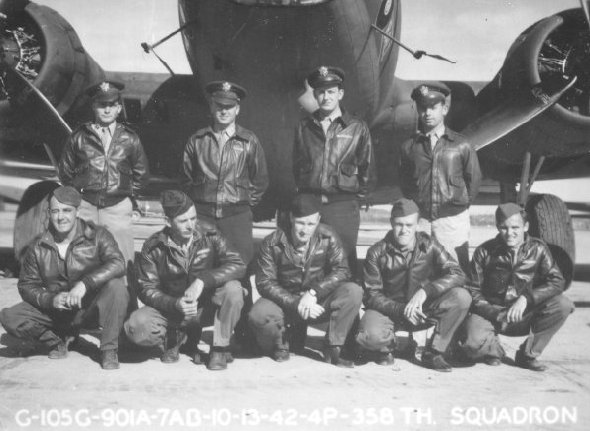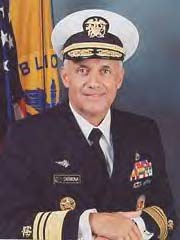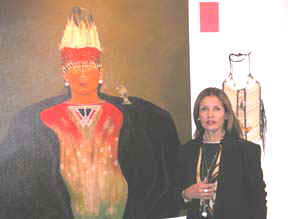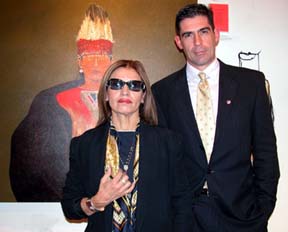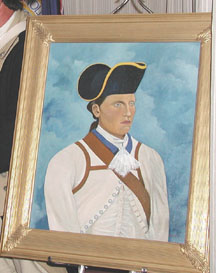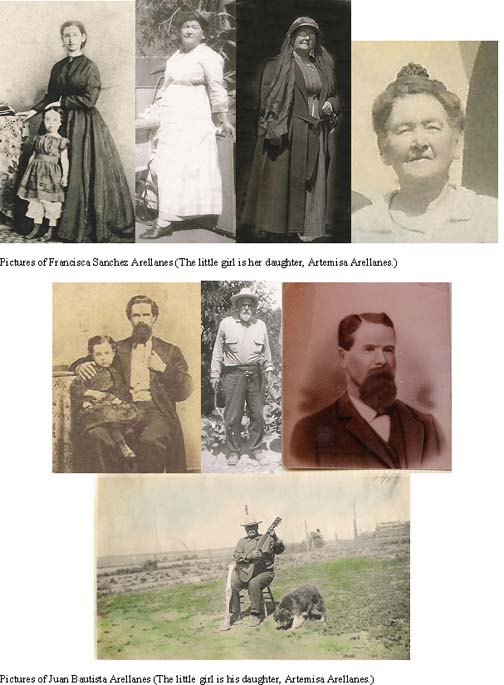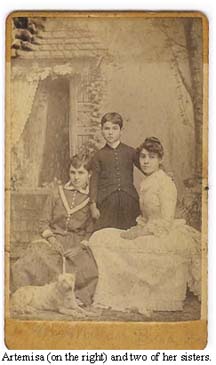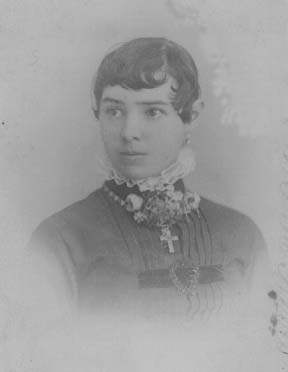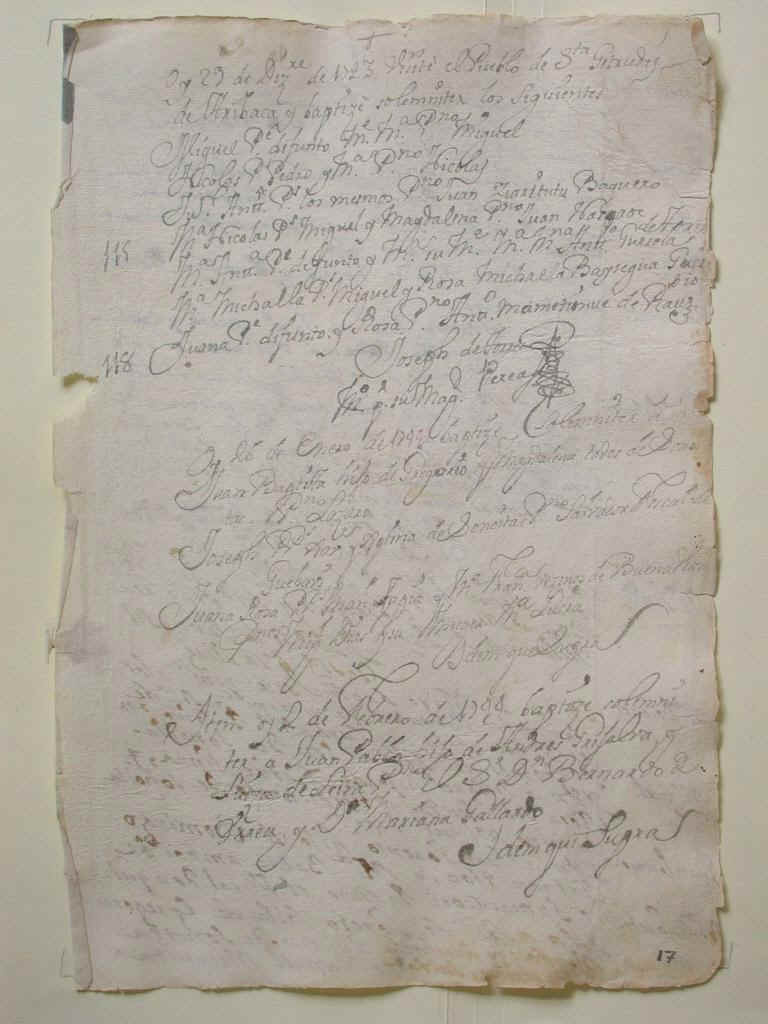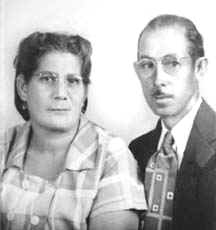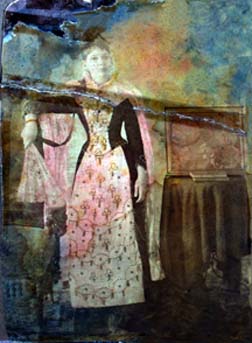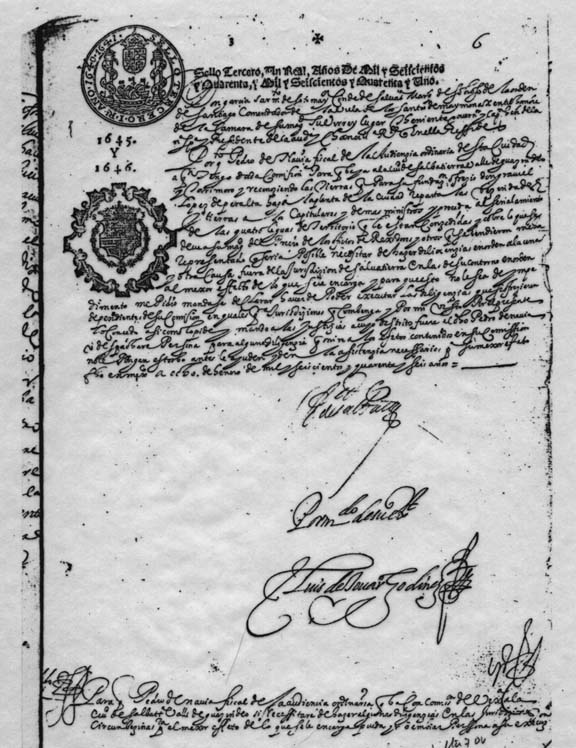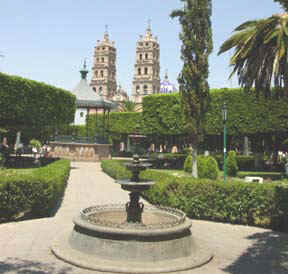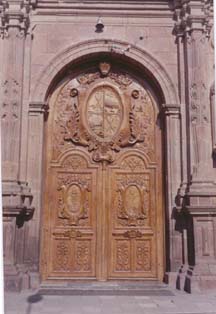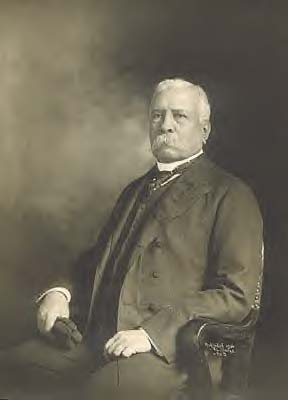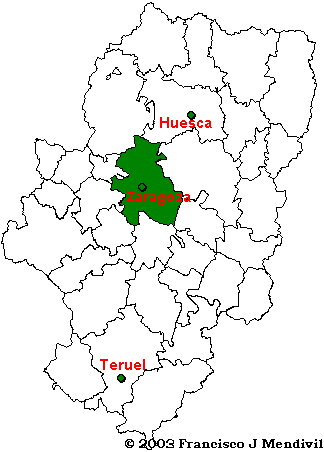During the early 1900s over 8000 Spaniards emigrated to the Hawaiian
Islands to work mostly in the sugar cane plantations. From Spain they
embarked on ships that traveled through the Straight of Magellan and
then continued on towards Hawaii.
After four or five years, the great
majority of these individuals left Hawaii to reside in California.
There were various reasons why they left
Spain, however most emigrated because of the poor economic conditions in
their homeland. A smaller percentage left in order to escape the fate of
their sons’ eventual recruitment to fight in Spain’s war in Morocco.
Different reasons also existed for the
later emigration to California. Many had Spanish friends and family
members who had preceded them to the Golden State. Those in California
encouraged their counterparts in Hawaii to leave the islands so that
they could take part in the good living conditions of a state that
resembled Spain.
Some Spaniards abandoned Hawaii after
seeing or hearing about the brutal putting down of a Russian rebellion.
There were different immigrant groups in Hawaii, and the Russians rose
up against their poor treatment in their work camp. Upon learning about
that incident, some Spaniards decided that it was best to stay quiet and
to then just sneak off to California.
In order to write this article, I referred
to two written works:
1) the book Memories of Spain, first published in 1994 by Anne Santucci
for the Club Espanol of Rocklin (California), and
2) a written paper entitled " Vida y Desventura de Ocho Mil
Españoles en Hawai Durante las Primeras Decadas del Siglo XX" by
German Rueda Hernanz of the University of Valladolid’s Contemporary
History Department.
I have also interviewed seven individuals
who are children, grandchildren, or spouses of Spaniards that had a
Hawaiian connection. The information from these interviews will be
presented in this article. I hope that I have not gotten too sidetracked
as I relate some of their experiences as I was also told about
circumstances during the Spanish Civil War, etc.
The persons that I interviewed told me
their stories as they knew or experienced the events. It is possible
that other Spanish-Hawaiians and their descendants recall the events
differently.
Finally I will include information about
‘Spanish-Hawaiian’ families taken from obituaries and other printed
sources, such as programs from Spanish associations’ celebrations,
etc.
Before presenting all of this, I want to
mention that my first major encounter with this subject took place
almost twenty years ago when I often had conversations with a Mrs. Pilar
Lopez who worked in the same public school office building as I did.
Lopez, whose parents were from the provinces of Salamanca and Soria,
Spain respectively, said that in the mid 1920s many Andalusians lived
around what was referred to as "la loma" in San Francisco,
California. These Andalusians had lived in Hawaii.
"La loma" included all of the
streets leading up to Koit Tower. It comprised of the hill area of
Vallejo and Green Streets (and Kearny Street in the same area). The
location started from Columbus and Grant Avenues, -and Stockton and
Union Streets also had sections in this area.
Many Spaniard’s also lived in San
Francisco’s Mission District during that same period. Lopez had some
friendships among the residents of "la loma" and she has
always been a good and generous source of information. Lopez was a child
when she and her family attended the inauguration of the Club Iberico in
San Leandro in the early 1930s.
In reference to the publications mentioned
previously, note should be taken that while Santucci’s book lists
seven trips on ships that brought Spaniards to Hawaii starting in 1907,
it does not report a ship called the Victoria which left the port of
Vigo (in Galicia), Spain in 1900 with 300 Spaniards which is listed in
Rueda Hernanz’s write-up. Rueda Hernanz, for his part, does not list
the ship Kumeric which is listed in the previously mentioned book and
which arrived in Hawaii in in 1907 with a total of 1114 passengers.
The
Interviews
The interview of Blanca
Crovetto Avancena was conducted
in her office in Walnut Creek, California on September 19, 2003. It was
the second of two interviews that were done in Spanish. Crovetto
Avancena is originally from Madrid, Spain. She works as a counselor for
women who have cancer.
The connection that Crovetto Avancena has
to the Hawaiian episode is that she is a descendant of Don Carlos
Crovetto, who worked in immigration matters and assisted many Spaniards
in doing the paper work for them to emigrate to Hawaii.
A flyer (which is printed in Santucci’s
book) was put up in many places in Spain that advertises the need for
workers in Hawaii. On the bottom of that flyer it says "For more
information …: Don Carlos Crovetto, person in charge of revision … Malaga
(Spain)."
According to Crovetto Avancena, Don Carlos
Crovetto had an Italian origin, making her a descendant of a General
Crovetto, whose statue is to be found in Genova, Italy.
Word for word interview of
Antonia Sanchez.
This was the first interview done in Spanish and it took place on
February 13, 1998 in Sanchez’s home in Antioch, California. (Her words
were translated into English by this author.) Sanchez
is the widow of Antonio Sanchez whose parents, grandparents and other
family members had gone to live in Hawaii.
Sanchez:
I was born on April 3, 1922 in Estepona, on the Costa del Sol, in the
province of Malaga.
We were nine brothers and sisters, that’s five men and four women. We
lived well until Franco (the dictator) came to power. When Franco was
taking control, everything became very different.
I was a teenager when Franco came, however
I know a lot about the situation at that time because this has been
talked about much in our home throughout our lives. We who did not win
the war suffered a great deal. In my family we were not Franquistas.
There were no jobs to be had. We had fields and these and everything
else was taken away from us.
We had to leave to another province because
of the danger of the war. We walked the entire distance from Malaga to
Almeria, where we ended up staying for three years, most of the entire
time in a tent.
Eventually we returned to Estepona and
because of some connections we had, we were at least able have our house
back. One brother returned from the war missing an arm. He had fought
against Franco’s forces. (It was not on the recorded interview, but
Sanchez also said that her mother was lucky to have all of her children
alive after the war. Other families were not so fortunate.)
Three of my brothers were in concentration
camps and then they were transferred to prisons. They were taken to the
penal prison of Santa Maria in Cadiz where they were held for five
years. Prisoners whose families did not send them food ended up dying.
After having suffered much, we encountered
good people that helped us a great deal. Presently, of the nine brothers
and sisters, there are only two left. Myself, and an older brother…
The parents of my late husband were Manuel
Sanchez and Isabel Mena. They emigrated to Hawaii in 1911. My husband
Antonio was born in San Francisco, California.
My in-laws lived in Hawaii for four years
and then they came here (to California). They later returned to Spain
after one of their sons was killed by a truck. A daughter of theirs had
also previously died during the ship voyage from Spain to Hawaii. Her
name was Francisquita. Her body was thrown into the ocean as a burial.
The other children that went to Hawaii with
them were Isabel, Antonia, Maria and Juan, who was the one killed by a
truck in California. They took their children Maria, Manuel, Juana, and
Antonio -my husband back to Spain with them. In Spain another child was
born to them.
The grandparents of my husband died in
Oakley, California. These grandparents left Spain for Hawaii because
their sons Francisco and Antonio (the uncles of the interviewee’s
husband) were going to be taken to fight in a war against Morocco. Many
people were also dying of a fever in Morocco. So that is why they left
for Hawaii.
Thus it was my in-laws and my husband's
grandparents that left for Hawaii. They all went on the same ship and
years later arrived in California on a same vessel. They were all
originally from Estepona, Malaga.
My husband was about seven years old when
he was taken back to Spain. Years later we married and we lived together
for 11 years before coming to live in California. Back then Spain was
still not doing well economically and my husband’s sisters in
California encouraged him to return to the land of his birth.
He preceded me to California and wrote to
me saying that yes, the poor are better off in America than in Spain. So
in nine months our two daughters and I joined him. One of my daughters
was ten years old and the other one was eight months old. That was in
May of 1953.
I now also have four grandchildren and two
great grandchildren. They all live in Antioch. (They all speak Spanish
because that is the only language Sanchez can really speak to them in.)
(Returning to the conversation about
Hawaii):
My husband’s family worked on the sugar
cane plantations in Hawaii. They were actually better off in Spain where
they had a large farm with many animals. They left to keep their
sons out of the war around Melilla (Morocco). One of my own mother’s
cousins was killed there.
Here in Antioch my husband worked in a
cannery. He later went to work at the paper mill where he worked 16 to
17 hours a day. It was because of all of this work that we were able to
buy a house.
After my first year here, I also started to
work in a cannery. I missed my family in Spain. In California I only had
my husband’s family. Besides my cannery job I had five houses where I
worked washing and ironing clothes. During the summer months we would go
to harvest nuts…
Note: Sanchez told me that the initial
years following her arrival in Antioch were pleasant ones. Spanish
families living on 9th, 10th, and 11th Streets would visit each other on
their front porches. There was a Spanish association and there was much
happiness. This is now all gone.
Interview of Father
Fernando Cortez, on February 18,
2003 at his St. Albert’s parish residence in Alameda, California.
Cortez:
I knew Spanish since childhood and I studied it in the university as
well. Both of my parents are of Spanish origins. My dad’s family
is from Malaga. They emigrated to Hawaii and then they came to
California. My mother came to the United States from Spain in 1948 and
my parents met here and got married.
I was ordained a priest in October 1977. I
have religious order people in the family, -in the family background
there are people that are Dominicans and Salesians, but I wanted to be a
diocesan priest principally because I wanted some sense of control over
my life …and also to keep closer to home because I am from a small
family.
It was only my brother and myself and my
parents at the time, and belonging to a small diocese like Oakland, I
knew that I wouldn’t be any where further than Contra Costa County…
And I like the Bay Area a lot because I was born here.
My father was born in Hawaii. My
grandfather had fought in the "Guerra de Cuba" in the
Spanish-American War, and when he returned home he married. At that time
I think he would have been around 25. And my grandmother was about a
month shy of 13 (years old).
I guess the authorities are dead now I
suppose. So it’s not going to matter… but
very young, married way too young. I think they did migratory
work, because the only evidence for that is that one of my uncles was
born in Cadiz, which is a neighboring province. And that wouldn’t
happen except that they might have been traveling to do harvesting…
harvesting grapes or olives or something.
So I don’t think that they were
stationary. Most people didn’t own land, so they had to be on the move
to try to find work… So my uncle Juan was born in Cadiz and the rest,
the other three I guess were born in Malaga.
My dad’s parents and four of his other
brothers and sisters came over in 1911 to Honolulu, Hawaii. And they
were there till sometime in 1917 and then they came to California.
They stopped off briefly in San Francisco,
and I guess through word of mouth or some sort of local help they found
a place to purchase. That place (area) is called Ramos Camp.
And the time the family was built up, it
was the parents, the grandparents, and ten kids… Four (born) in Spain,
three in Hawaii including my father, and two more were born in Hayward
(California). And a tenth child was adopted…
Yes, the home that they purchased… is at
where today is basically Ramos Avenue (in Hayward). It was a very small
house, so it was a bit crowded. But they did have a large enough piece
of property to have a home garden. The places that I know of from my own
experience (where Spaniards lived) were Hollister, Sunnyvale, Hayward,
San Leandro, and a few people in Oakland, and a few people in the
Antioch area.
I knew a few people from Antioch because I
lived there as a child briefly for a about a year or two, and my parents
had a mom and pop’s store. We came back to Hayward after that…
The other thing that affected the local
Spanish communities… the (Spanish) Civil War in the thirties ended up
being extremely divisive. The only comment I heard once was that there
had been some rows and fights over where (to Nationalists or Republican
areas) Red Cross materials were going to
be sent… I think that profoundly
affected the stability of the Spanish immigrants’ socializing.
There wasn’t that kind of divisiveness for Portuguese or other groups
because their countries didn’t go through that process, the way Spain
did so drastically…
I think that locally, I don’t know how,
but I suspect that that very much divided the community… I’ve never
been able to understand why the Spanish situation here was so weak
compared to other immigrant groups, as far as their cohesiveness, -and
that’s (the divisions over the war) the only thing I can think of.
Note: Fr. Fernando Cortez expressed that
most of the Spaniards that he knew about that had emigrated to Hawaii,
were for the most part from Andalusia.
Interview of Frank
Perez, conducted at his
residence in Martinez, California on December 8, 2003.
Perez:
I was born in Hayward, California in 1946. I learned a little (Spanish)
at home, but actually to carry on a conversation I had to learn it in
high school. My parents spoke English around the house. It was my
grandpa and grandmother who were the only ones that actually spoke
Spanish.
My paternal grandfather died in Spain
before my father was born. So my paternal grandmother came (to Hawaii)
with three children and another male, whom we’re not sure who he
was. And my maternal grandparents both came [to Hawaii]. (Perez
knows more about his paternal side of the family).
On my mother’s side, I asked my
grandmother - she said because your grandfather didn’t get along with
the people in the village. And he wanted to leave because he didn’t
like them.
That was the Sephardic side, on my mother’s
side.
Interviewer’s
question: How did you know that
you have Sephardic ancestry on your mother’s side?
It was just kind of known. They didn’t
practice it, but they really didn’t practice Catholicism either. It
was just kind of there, you know… It just was kind of known in the
family, but it was like something to hide, not discussed. It would come
out once in a while.
One time I asked her [my grandmother] why
she had all these crucifixes and things around the house. She said,
" In case they came." I said, "who?" She said,
" In case they come to look, to see if we have them…"
Wine would come out for Hannukah…
(In reference to Spanish communities in the
San Francisco East Bay area…) These were small towns. Everyone was
pretty hick. San Leandro was the closest town, real city. Everyone knew
everybody in these towns because they would go from Oakland to San
Leandro, Fremont, Newark. It was like a little community. So everyone
knew everyone, everyone was Spanish, knew everybody in those
communities.
I could go into Oakland and they’d take a
look at me and they say, "Oh, you’re one the Mateo kids, aren’t
you?" And I say, "Yeah, that’s my grandmother."
There were a lot less people in those days.
A lot less. We had family in Oakland, San Leandro…It was a tight-knit
community, because there was not that many people.
The Club Iberico in San Leandro, they’d
have weddings and parties and birthdays. We were there a lot. I have a
lot of memories there. Good memories.
My grandmother, my maternal grandmother
knew all the other people that came from the old country. They all kind
of hung together, all the old ladies and old men. And they would
socialize in each other’s homes. There was a little community there.
My maternal grandmother could not read or
write. I think they said my paternal grandfather could. That was pretty
common in those days.
My father was, I think, five [years old] or
something when he went over there [to Hawaii], and talks about the
voyage and how bad it was.
The first place they got to after leaving
Portugal was either Montevideo or Argentina. Some of the family left at
that point because the voyage ended up almost two months. And they said
enough of this. So a lot of them jumped ship there. We lost track of
them [those relatives].
And then the next step was Punta Arenas,
Chile. And some [relatives] left in Chile. And then, they left Chile and
headed toward Hawaii.
And my father went to Lahaina [Maui] first
and they worked on the sugar cane plantation. And he talks about what it
was like. The surprising thing is though, that they were like slaves.
They were treated like slaves.
And he talks about how the plantations are
owned by the whites and usually the strong bosses were the Portuguese.
And they treated them even worse than the whites did. They were really
rotten to them.
As soon as he got there [to Hawaii, my
father worked]. The whole family worked. Pulling cane. He [my father]
had a third-grade education, if that.
So he was out there with his two brothers
who were older than him. The thing that amazes me is how everyone got
along… because they were there with the Chinese, the Japanese, the
Filipinos…
He always talks about the flu, that when
they had the big epidemic. And he was saying that, I think she was
Portuguese, would make chicken soup. And she would go from shack to
shack, or whatever they lived in, and people would pool whatever they
had to make this food.
So they were just hauling bodies out of
there. People were just dying. That was when they had a world epidemic
of the flu.
But all these different people from all
over the world were all pooling together to survive. They were all
healing each other.
And then he talks about how the Puerto
Ricans wouldn't take any [?] from the Portuguese bosses. And if you were
sick, they’d come and they’d rouse you out of bed. [They say]
"You’re not sick - work!" And they’d drag you out. That’s
like slaves.
Well they got kind of pushy with a couple
of the Puerto Ricans. They were out there, on the sugar cane fields and
killed the bosses, the Portuguese bosses. They just got a knife and slit
their throats.
He talks about how, on the one hand, they
were treated so terribly, but then, on the other hand, he talks about
how as a kid, not going to school, running around -- because they fooled
around a lot too.
And I remember he was talking about how
when they left there to go to Honolulu, the owner of the plantation,
whatever, gave my grandmother a shawl and was crying because they didn’t
want to see her leave. Because my grandmother worked in their house, and
did their washing and ironing.
There was no dock there, in Lahaina. So
they’d have to take it all out on this little boat, and load it onto
this big ship. And they were there and all scared going to Honolulu. And
they lived there for a while. They came to the states after that.
[In Hawaii] you had to pay off [by
working], work off your indentured servitude. But they worked that off
and got enough money together and they came to the states.
I said, "Why did you leave paradise to
come here?" They said you couldn’t get ahead there unless you
were Asian. By that point all the big plantations were owned by whites,
but the regular businesses were all owned by Asians. And they wouldn’t
hire you. They would hire Asians, it was very prejudiced that way. You
couldn’t get a job. You couldn’t get ahead there.
The Portuguese stayed [in Hawaii], but the
Spanish as far as I know all left.
Ouestion:
Is your father still living?
Perez: Oh yeah.
Question:
And your mother?
Perez: She died in the sixties…
The family pretty well married Spanish,
until they came here [to California]. They went to San Francisco first.
They hated it; it was so cold. They were there for a very short time,
like months.
They went to a picnic in Niles Canyon.
Someone invited them. Some David they knew. These people all networked.
Everybody, it was unbelievable, in network.
And then they met somebody there, and then
they said, " Oh, we live in Union City." - which was Alvarado
then. And they liked it out here because it was warmer. So then, they
moved out here and then they stayed.
These were all networked. You didn’t do anything without networking…
There was this little community of Spanish people. And they, all the old
timers, who were there from the old country. The mother, the
grandmother-type, you know from the old country. Not necessarily all
from Hawaii… These kids would marry or settle down. They'd build a
house for them. So there was this whole little thing here.
One part of the town was Spanish and
Mexicans; the other part was Portuguese.
Now it’s the Indians and the Afghanis,
they’ve done the same thing, in the same town.
There are still some [Spaniards] there,
believe it or not… It the Alvarado district, [of Union City] on the
bay side of the freeway, of [Interstate] 880.
[Back then] I would say 600 to 700 Spanish
people lived there. It was a small town…
It was always a big treat to go there [to
the Club Iberico of San Leandro], because you’d see all the Spanish
people. There was very much pride involved.
My family stopped going, my grandmother got
older. And then I remember her children, my mother and aunt and uncle
weren’t interested at all. That was like a relic of the past.
If she’d [my grandmother] wanted to go, they’d kind of like would
begrudgingly take her. They were not into it at all.
Well they weren’t going, and I was a
teenager doing my own things. So all of a sudden it wasn’t there any
more.
(More
thoughts on Perez’s childhood experiences):
My father was from Andalusia, my mother was
from the province of Caceres. As a little kid they'd always point, my
mother, I can still remember to this day, she'd point at my finger tips
and say that they were dark. She’d say, "Cause you have Moorish
blood." Which is not a good thing.
My mother married an "andaluz"
and we’re mixed with the Moors, so you are less than them…
And I was the only kid [among my cousins]
that didn’t have blond hair as a child. All the other kids had blond
hair or light hair. I had jet-black hair because I had all the Moorish
blood.
At the Club Iberico [in San Leandro] at
social gatherings, there was a little hierarchy that went on. The
Spanish that were from the East Coast [of the U.S.A.], that came from
Spain to like, New York, or Connecticut or something - and ended up in
the Bay Area, they carried themselves, acted a little better, a little
higher caste… better dressed, a little more educated, than the Hawaii
branch of Spaniards.
And they were always like the upper crust,
and we were always like below them. It was never said. I don’t recall
anyone ever saying this…
There were even class differences as to
where you lived. If you lived in San Leandro or Oakland, you were higher
caste than if you lived in Hayward or Union City. The houses were
better, more expensive [in the former cities mentioned]…
(Perez said that most of the Spaniards
around his generation married Anglos. He only has one cousin that
married a Spaniard).
Author’s note: Of the Spanish- Hawaiian
descendants that I met, many married Anglos, Mexicans, Portuguese,
Spaniards, etc.
In summary, Perez's father was born in
1906. He arrived in Hawaii in 1911 and he was 16 years old when came to
California.
Interview of Rose
Pearce, on done December 15,
2003 at her residence in Brentwood, California.
Question: When were you born?
Pearce:
1922 in Oakley, California.
Question: Do you speak Spanish?
Pearce:
Yes sir… As a child I spoke both languages [Italian and Spanish]. I
didn’t speak English when I went to [started] school.
My mother’s family came from Ubeda,
Spain, -which is Southern Spain. My father and his three brothers came
from Italy. And then they came through… well, they came through New
York and they went to Bradford Island because they had two uncles living
there.
My mother’s family came on the Willesden
[ship]. My mother and her family lived in Hawaii for five years, that
was the contract that they had with England.
Well, of course, you know the paper [a
flyer distributed] was in Spain, telling all about Hawaii, and they gave
them a house to live in, and school was free and the house was free if
they stayed five years, which my grandparents did stay five years [they
would’ve been given land], but they never knew about it.
And after five years, the house and the lot
around it would be yours. But he didn’t know, so he didn’t claim it.
And I think that happened to a lot of them.
My mother’s family was on the big island
of Hawaii and they were in the town called Pahala. My mother went to
school there.
My grandfather and his family left Spain
because they were starving. They were very poor and they had no future.
And so he saw this paper [flyer] in town and somebody read it for him
(he couldn’t read) and so he got the inspiration to come to Hawaii,
because he wanted to better his family life. Because they had nothing to
eat in Spain.
My grandfather fought in the
Spanish-American War against the Americans… in the Philippine Islands.
His name was Jose Sanchez.
My mother was born in Spain. Her name was
Ana Maria Sanchez and she was five years old when she left Spain. She
left with her parents, an older brother and two younger brothers. One
more sister was born in Hawaii.
I went to Hawaii and I went to see where
they lived, and I saw the house. It was fine. They had this house and
they had the kitchen outside because that was the custom back in those
days. It was a two-bedroom house. Yes, it was on stilts, it had to be on
stilts.
They worked in the sugar cane
[plantations], they cut the cane with the machetes. They worked in the
fields, the kids and all. Of course, they had to go to school, that was
the law.
They left [eventually] and went to San
Francisco [in 1918] and they went to high school in San Francisco… My
mother worked at Ghiradelli Chocolate factory.
They lived in San Francisco for a while,
but my grandfather liked the country. Some of them came out this way and
they’d write to each other and we came out this way.
[In San Francisco] they lived on Pacific
Avenue. "La loma" they called it, the Koit Tower area.
My grandfather was very much involved with
the Spanish community of the Antioch-Oakley area. Not my mother so much
because my father was Italian and he had a lot of Italian friends…
My grandfather bought a house there [in
Oakley] and he worked out in the fields. And then he bought, can you
imagine, he bought 29 acres of land and he paid cash. Can you imagine
that?
Yes, I knew a lot of Spanish families
through my grandfather because he would visit a lot. Many of us joined
the one [the Spanish club] in Rocklin.
I have a book that has photographs. This is
the company that they worked for (showing the book).
This is the Spanish
camp, see… this is the book of Hawaii where they worked. That’s the
name of the company [and the book] -Kau Sugar Company, Incorporated.
That’s all about the place where they worked. And the history is
there, everything is there.
I went to the company and got the book,
when I went to Hawaii. And they gave it to me. [The
book is dated December 29, 1972.]
[In California] my father was a farmer...
My mother when she's living at home with her parents, that's how she met
my father, she worked out in the fields.
In those days there used to be seven packing
houses in this area. And she worked in the packing houses... I cut fruit
and everything and worked out in the fields. Yeah, at home.
There were a lot of Spanish people in
Oakley. We used to call it Spanish town at one time. They had streets and
streets of Spanish people... because they worked in the fields, and of
course the farms are out in this community. The ones in Antioch worked
more in the mills.
The ones my age, some of them are still
around. But a lot of them, you know, they married other nationalities
and moved.
We had the theatre in Brentwood, we showed
Spanish-speaking movies. We showed movies from Mexico and from Spain.
Then Oakley had Spanish-speaking films and we use to go a lot there. But
that closed up and then we showed them. In the theatre we showed
Spanish-speaking movies Wednesdays and Thursdays.
Question: Who did that? Who
initiated and organized that?
Pearce:
My husband and my brother in law.
Question: So all this in the 50s
was, your family did that?
Pearce:
Yes, my brother in law and my
husband both.
I'll tell you a cute story from Hawaii. A
Japanese man came to the house and he said, "arigato." That's
Japanese for thank you, right?... He [my grandfather] use to kill hogs
in the winter time. You know, all the Spanish people use to do that. So
he [the Japanese man] came over to buy some meat. And he said,
"arigato." But this sounded like "cara de gato" (catface)
in Spanish.
(Pearce's grandmother understood that he
had called her 'catface', and her grandfather went after the Japanese
man.)
My grandfather, he did quite well for a man
that couldn't speak English. He couldn't read and write his own
language. He had 13 children. He raised eight. Some went to
college. Five children passed away when they were small. There's
one buried in Hawaii, another one buried in San Francisco...
A lot of them (the Spaniards from Hawaii)
had to come to Angel Island (in the San Francisco Bay). Because I went
to Angel Island to see where they passed... I heard it from the Spanish
people that some of them had to come through Angel Island. I think there
was a flu epidemic here at that time or something. And they had to go
there before they could come in. I heard it. I didn't read it, and it's
a true story.
(In reference again to the family
emigration to Hawaii):
My grandfather and his family and two
sisters were going (to go) to Hawaii. Somewhere or another things got
mixed up in Gibraltar and they (the sisters) ended up in Brazil. They
got mixed up somehow and got on the wrong ship. They (the sisters) wrote
back to Spain and my grandfather sent a letter to Spain, and that's how
they found out what happened.
Note: Pearce said that England had placed
the flyers around Spain to encourage people to sign up to work in
Hawaii. Pearce's maiden name is Giannini.
Interview of
Dave San Martin, done on
December 16, 2003 in the home of this author (Jaime Cader).
Martin:
I was born in 1967, in Antioch
(California). My father was born in Antioch in 1923. He was the last one
to be born in his family. He was the tenth one. He had a brother Adam,
that was born, that died as a child in Hawaii. My uncle Joe, Joe San
Martin, I believe was born in Hawaii, if not Antioch. Then I had an
uncle Frank San Martin, -those are the three brothers all together.
Then there was four sisters. One died as a
child, Rose San Martin. Then there was my aunt Dorothy who I believe was
the one that was born in Spain, -as a little child came over on the ship
to Hawaii...and then to San Francisco and migrated to Antioch.
Then there was my other aunt, aunt
Asumption. And there was also my aunt Margaret...
Adam was buried in either Maui or Hawaii,
but my aunt Rose was buried in the Catholic cemetery in Antioch. Also my
grandfather Simon and Francis San Martin (the grandmother) were buried
in Holy Cross Cemetery (the Catholic cemetery in Antioch).
My grandmother Francis passed away when my
dad was two years old. Sad to say, from a poisoned pickle or bad
pickle...It was very traumatizing to the family.
1962 [It's when my grandfather died]. I
believed it was Palencia, Spain, but It could have been Valencia, Spain,
- but I believed it was Palencia [where my grandparents were from].
Question: Why do you think your
family might have left Spain?
Martin:
Possibly for a better life in America, - a more prosperous life or a new
start. When I went to go visit Hawaii (1977) to go look for my uncle's
grave, Adam, - I was at a church playing with my sister and looking
around I noticed that there was a carving in the tree, and it happened
to be my aunt Dorothy's carving of her name in the tree and the date on
the tree, when she was there...
(In reference to why his grandparents came
to Antoich)
I believe it was possible that Father
Perdigon (a Spanish priest in Antioch) came over in the boat, the same
time, my grandparents did, he helped to found Holy Rosary Church.
He [my grandfather] purchased some land on
4th Street and K [Street], or 5th and K. And they had a home with a
cellar. And then they built a small apartment and another home. They
made wine in the cellar. My grandfather was a contractor with the farms
in the surrounding areas, and his children where part of his crew.
That was part of the survival as a fruit
picker, was they got to have some of the food [i.e. grapes for wine
making] themselves. Also he used some of the wine as a barter system. He
traded wine for certain possible other things, other foods or what have
you - "You help me do this and I'll give you some wine"...
Yes, the whole family spoke Spanish. In
1988 he [ my father ] passed away...He owned a bar in Antioch, on 4th
and K Street, called Hank's Forum Club. He was in the bar business from
age 18 till he sold it at age 65...He started out as a bouncer in the
bar that he did own eventually...
In fact there was a Spanish lodge in
Antioch. My father told me about it. [It was] from the age when my
father was a young man...I believe so [that there was a building]. They
did have "fiestas" in Antioch in the streets. They'd kill a
pig. They would dance to Spanish music and drink wine [in] old downtown
Antioch.
My father had an affiliation with the
police department since he was in his teens. and that was one of the
reasons why he was well known in Antioch. So that's one of the reasons
why he was able to be a bouncer when he was 18.
And he rode with the police at a very young
age until he was diagnosed with cancer. His bar was a cop bar. One
of the first things they did when an Antioch police officer became a
cop, was to bring him to my dad's bar and introduce him to my dad.
She [my mother] came from Alabama. [When]
she was sixteen years old she ended up in California. They (her family)
are very deep-rooted in Alabama.
I loved him (my father) very dearly, but he
had to work long hours, six days a week. That made it rough on the
family. My father went to Spain when I was a young child. I believe he
saw some relatives. But he was very home sick for me and his family, and
he came back home early. He brought me back a few things.
Note: San Martin's Aunt Margaret, who
married into the Spanish Del Pozo family, has kept in touch with
relatives in Spain. They have come for visits.
TO BE CONTINUED
Jaime Cader, a second generation
Salvadoran-American resides in Antioch, California and is presently the
only Hispanic commissioner with the Contra Costa Human Relations
Commission. He is also a board member of Celebrating Culture and
Community, a non-profit multicultural arts organization.
Interview of Elvera
Rios, done by telephone on
December 17, 2003. Rios is the widower of Martin Rios, whose parents
emigrated from Spain to Hawaii. The following is not the word for word
transcript of the interview, but rather the information that was jotted
down while taking notes.
Martin Rios' parents were Martin Rios and
Angelina Marquez. They were originally from La Zarsa, Granadilla, Spain
and they worked the sugar cane plantations for several years in Hawaii.
Martin Rios Sr. limped because he had an
accident in Hawaii. He was walking a team of horses when he suddenly
fell into a ditch. He was eventually found some time later. His nickname
was "Martin el cojo." Years before arriving to Hawaii, Rios
Sr. had fought for Spain in the Spanish-American War. He had a brother
that had emigrated to Argentina.
Martin Rios Jr. was born in Oakley,
California in 1925. He passed away on December 25, 2001 in neighboring
Antioch, California. (His obituary will be presented later on in this
article.) His sister Angelina Rios was born in Chico, California around
1924 and his brother Joseph Rios was also born in Oakley around 1927.
Elvera Rios's maiden name is Furtado. She
was born in Sacramento, California in 1927. Her father was born in
Brazil to Azorian parents. Her mother, who was of Portuguese descent,
was born in Niles, California, which is presently the city of Fremont.
In 1979 and in 1982, Martin Rios Jr. and
his wife Elvera traveled to Spain and visited family members.
Elvera's older sister Evelyn also married a
Spaniard whose family had emigrated to Hawaii. Evelyn's birthplace is
San Francisco, California. Her late husband, Manuel Perez, was born in
Brentwood, California. His sister Mary was born in Hawaii. Perez passed
away five years ago in Antioch, California.
Elvera and her sister Evelyn each had three
children. Martin and Elvera Rios were active in the Circulo Espanol de
Stockton. It was because of their encouragement that this author and his
mother became members of that club.
A Book emigrated: In 1926 a book entitled History
of Contra Costa County (California) with Biographical Sketches
was published by the Historic Record Company of Los Angeles, California.
On page 939 there is an entry detailing
historical and family information concerning two brothers, Joseph and
Peter Lopez. Of some of the family members mentioned, some include the
family of Antonio Sanchez, the late husband of Antonia Sanchez whose
interview is included previously in this article.
Four
Obituaries:
Isabel Sanchez Lopez
Martin Rios, Jr.
Antonia Sanchez Lopez
Antonio Pretel
[Sisters, Isabel Sanchez Lopez and Antonia
Sanchez Lopez are sister in-laws of Antonia Sanchez.]
Printed in the Ledger Dispatch (of Antioch,
California) on June 1, 2000:
Isabel Sanchez Lopez, April 20, 1900-May 24, 2000
Age 100. Died at Kaiser Hospital, Walnut Creek, CA due to a short
illness. She resided in Concord, CA at the time of her death and lived
in Contra Costa County for 85 years. Native of Estepona, Spain.
Isabel was a loving mother, grandparent and
packer at Western Cannery in Antioch, Ca. She attended Immaculate
Heart of Mary Catholic Church in Brentwood, CA. Preceded in death
by her husband Pedro Lopez in 1974 and her daughter Marina Lopez in
1998.
She is survived by: Daughters; Mary L.
Martinez of Concord, CA; Isabel Arnold of Richland, Washington; Son,
Michael Lopez of Brentwood, CA; Sister, Antonia Lopez of Pittsburg, CA;
Brother, Francisco Sanchez Mena of Estepona, Spain and 10 grandchildren,
17 great-grandchildren, 6 great-great grandchildren.
Services were held on Wednesday, May 31 at
the Brentwood Funeral Home. Burial was at Holy Cross Cemetary, Antioch,
Ca.
Memorial gifts be given to your favorite
charity. See http://www.legacy.com
(Note: Isabel Sanchez Lopez was the sister of Antonia Sanchez's late
husband, Antonio Sanchez. Sanchez Lopez emigrated to Hawaii in 1911. Her
sister Antonia Lopez, was the mother of Pete Lopez, a former mayor of
Antioch, California. Pete Lopez was elected to the Antioch City Council
on April 12, 1966. He was elected mayor by the Council on April 10,
1967. He completed his term as mayor in April of 1968 and was an
outgoing Council member on April 21, 1970.)
Printed in The Sunday Times (Contra Costa
Times), December 30, 2001.
Martin Rios Jr. Feb. 8, 1925 - Dec 25, 2001
Martin
Rios, Jr.
a long time resident of Antioch died on December 25th, at the age of 76.
Martin served in the Army 10th Mountain Division during World War II. He
was a long time member of the Y.M.I # 26 & El Circulo Espanol of
Stockton. He retired from Dupont after 20 years and previously worked
for Fibreboard. Martin is survived by his loving wife of 54 years,
Elvera and three children and their spouses, Martin & Maria Rios,
Bernadette & Kraig Hansen and Edward & Denise Rios all of
Antioch. He is survived by seven grandchildren which he enjoyed
babysitting, Frank, Jacob, Josh, Sarah, Christine, Curtis & Ryan.
Martin is also survived by a brother Joseph of Katy, Tx & sister
Angelina Miolono of Albuquerque, NM. He is preceded in death by brothers
Isaac, John, Paul & Donald, sisters Flora, Victoria, Bernice &
Mary & grandson Eddie.
Friends and relatives are invited to attend
a visitation at Higgins Chapel Wednesday, January 2, 2002 from 4:00 to
8:00 p.m. with the Vigil Service at 7:00 p.m. Funeral mass will be held
Thursday, January 3, 2002 at 10:00 a.m. at St. Ignatius Church, Contra
Loma Blvd. He will be laid to rest at Holy Cross Cemetary,
Antioch.Memorial donations may be made to St. Ignatius Church Building
Fund.
Printed in the Contra Costa Times on April
22, 2003.
Antonia Sanchez Lopez
January 3, 1903 -April, 19, 2003
She was born, as was her deceased husband
of 65 years (1986) Mike Lopez Sr., in Estepona, Spain. She lived in the
cities of Pittsburg, Winters, and of late, Antioch, CA. She was well
known in the "Cannery Workers circle" in Pittsburg and
Antioch.
She is survived by her daughter, Isabel
Lopez Wallace of Antioch; sons, Pete Lopez of Antioch and Anthony M.
Lopez of Las Vegas; and many grandchildren and great-grandchildren and
great-great grandchildren. She was also preceded in death by sons, Mike
Lopez, Jr., Manuel S. Lopez; grandson, Mark A. Lopez.
She was proud to be a 3-star mother, having
three sons who served during World War II. Visitation will be held
Wednesday, April 23, 2003, 3-8 p.m. Rosary at 7:30 p.m. at the Higgins
Chapel. Graveside Services will be held Thursday, April 24th at 10:00
a.m. at Holy Cross Cemetery. Family requests donations be made to Holy
Rosary Church. (Note: Sanchez Lopez emigrated to Hawaii with her
parents when was about eight years old.)
Printed in the San Francisco Chronicle on
Friday, October 31, 2003.
Antonio
Pretel - In San
Francisco, October 28, 2003 at the age of 100. Father of Mary &
Dick; father-in-law of John & Susan; grandfather of Deborah,
Michelle and the late Brian; great-grandfather of Crystal, Elisabeth,
and Brian; great-great grandfather to Juliet.
Antonio was a native of Spain and raised in
Hawaii. He came to San Francisco in 1921 and became a United States
citizen in 1938. He was a member of the Moose Lodge in Colma. Antonio
was a proud candy maker for over 50 years. He will be remembered as a
very special and caring father, grandfather, and friend.
Family and friends are invited to visit
Thursday, Oct. 30 2003 after 1 p.m. and attend the Vigil Service at 7:30
p.m. at HOGAN, SULLIVAN & BIANCO, 1226 - 9th Ave. (Irving &
Lincoln). Funeral Mass Friday, Oct. 31, 2003 at 9:30 a.m. at Holy Name
of Jesus Church (39th Ave. & Lawton). Internment Holy Cross Cemetary,
Colma. Flowers welcome. (415) 664-2413
(Note, the following information was told
to me by Pilar Lopez, whom I referred to at the beginning of this
article: Pretel's real last name was Pretez, however upon arriving in
the United States, he was most likely misunderstood and his last name
was written down as Pretel. He was an Andalusian and had lived on
"la loma" in San Francisco, California.
Manuel
Carillo: The following was
obtained from speaking to Inez Dominguez, the president of the Sociedad
Isabel la Catolica, her father Manuel Carillo, and from a program for
the 68th anniversary celebration of the previously mentioned "Sociedad"
and the same program to celebrate the 71st anniversary of the Sociedad
Cervantes Espanola on February 27, 1999:
Manuel Carillo was born in Hawaii to
Andalusian parents. His late wife Dolores (Dottie) Carillo was also born
in Hawaii to Andalusian parents. Dolores became the first woman
president of the Sociedad Cervantes Espanola in 1986. Both of these
Spanish associations are located in the Sunnyvale, Calif.
Dolores
Jimenez: From the program
celebrating the 25th anniversary of El Circulo Espanol de Stockton on
October 19, 2003: Dolores Jimenez was the first president
from 1978 to 1979. She was elected president for later years also.
Currently, her daughter Eleanor Vetter is the president.
(Note: Dolores Jimenez was born in Maui,
Hawaii to parents from Extremadura, Spain. Her story was reprinted in
the book Memories of Spain by Anne Santucci.)
It is hoped that with this article the
story of Spanish emigration to Hawaii will become better known. Also, I
hope that the story about Spaniards in recent California history will be
known. I have not seen any articles about this community in the Antioch
area newspapers. |
